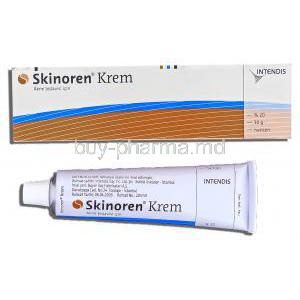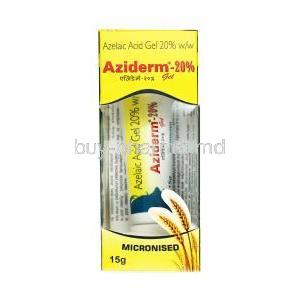I. Introduction
Overview of Imiquimod Cream
Imiquimod cream is a topically applied immunomodulator used to treat several skin conditions by enhancing the body's natural defense mechanisms. Its primary use is for combating viral infections of the skin such as warts and for treating minor forms of skin cancer.
Historical Development and Approval
Developed in the late 20th century, Imiquimod was approved by the FDA for medical use in the late 1990s. It represents a significant advancement in dermatological therapy, offering an alternative to surgical interventions for certain conditions.
II. Composition of Imiquimod Cream
Active Ingredients
The active ingredient in Imiquimod cream is imiquimod itself, a potent immune response modifier that works by inducing the production of interferon and other cytokines.
Inactive Ingredients and Their Roles
- Isostearic acid: helps to stabilize the cream’s formulation.
- Benzyl alcohol: acts as a preservative and solvent, enhancing the shelf life of the product.
- White petrolatum: serves as a moisturizer, forming a barrier on the skin to prevent moisture loss.
III. Mechanism of Action: How Imiquimod Cream Works
Activation of Immune Response
Imiquimod cream activates the innate immune system by binding to toll-like receptor 7 (TLR7), which in turn induces the production of pro-inflammatory cytokines, a critical component in the immune response against pathogens.
Effects on Skin Cells and Viruses
Through its immunomodulatory effects, Imiquimod encourages apoptosis (programmed cell death) in cells infected by viruses, thereby reducing the viral load and promoting healthier skin tissue regeneration.
IV. Uses of Imiquimod Cream
Treatment of External Genital and Perianal Warts
Imiquimod cream is widely prescribed for the treatment of external genital and perianal warts, offering a non-invasive treatment option that patients can apply in their own homes.
Basal Cell Carcinoma: When and How Applied
For basal cell carcinoma, Imiquimod is used as a topical therapy for non-invasive tumors, particularly those in hard-to-treat areas, reducing the need for surgical excision.
Actinic Keratosis: Application and Efficacy
When treating actinic keratosis, a precursor to skin cancer, Imiquimod cream is applied to the affected areas to diminish the lesion and prevent progression to squamous cell carcinoma.
V. Off-Label Uses of Imiquimod Cream
Molluscum Contagiosum
Although not approved for molluscum contagiosum by the FDA, Imiquimod has been used effectively in several cases, reducing lesions by stimulating the local immune system.
Other Dermatological Conditions
Researchers are exploring the application of Imiquimod in other dermatological conditions due to its robust antiviral and antitumor properties.
VI. Dosage and Administration
Standard Dosages for Different Conditions
The dosage of Imiquimod cream varies based on the condition being treated, typically applied two to three times a week until the lesion resolves.
Application Techniques
Application techniques include cleaning the area, applying a thin layer of cream, and allowing it to remain on the skin for approximately 8 hours before washing off.
Duration of Treatment
The duration of treatment with Imiquimod cream can vary from a few weeks to several months, depending on the severity and type of the skin condition.
VII. Side Effects of Imiquimod Cream
Common Side Effects: Local Skin Reactions
- Redness and swelling
- Itching and burning sensation
- Peeling and flaking of the skin
Systemic Side Effects: Rare but Serious Concerns
While rare, systemic effects such as fatigue, headache, and flu-like symptoms can occur, particularly with extensive application or sensitive individuals.
VIII. Important Precautions and Warnings
Skin Sensitivity and Allergic Reactions
Imiquimod cream, while efficacious, may precipitate dermal hypersensitivity reactions characterized by severe erythema, edema, and induration. Users should perform a patch test prior to comprehensive application to mitigate potential allergic responses.
Environmental Factors and Sun Exposure
Exposure to ultraviolet rays may exacerbate skin reactions in patients using Imiquimod. It is imperative to advise patients to employ protective measures such as applying broad-spectrum sunscreen and wearing protective clothing during treatment periods.
IX. Special Considerations in Administration
Administration to the Elderly: Adjustments and Observations
Elderly patients may exhibit heightened sensitivity to Imiquimod due to diminished dermal integrity. Clinicians should closely monitor for severe skin reactions and systemic symptoms, adjusting the treatment regimen as necessary.
Use in Pregnant Women and Nursing Mothers: Safety Profile
Imiquimod is classified under FDA Pregnancy Category B. Animal studies have not demonstrated teratogenic effects, however, its safety in pregnant women is not conclusively established. It should only be used when the potential benefits justify the potential risks to the fetus. Nursing mothers should also exercise caution, as it is not known if Imiquimod is excreted in human milk.
Pediatric Use: Guidelines and Limitations
The safety and efficacy of Imiquimod in pediatric patients have not been fully established. For children diagnosed with conditions treatable by Imiquimod, its use should be under stringent medical supervision and tailored to individual tolerance levels.
X. Interactions With Other Medications
Common Drug Interactions
Imiquimod may interact with immunosuppressants and other topical treatments, potentially altering its efficacy and increasing the likelihood of adverse reactions. Comprehensive medication reviews should be conducted to avoid deleterious interactions.
Avoiding Negative Interactions
To prevent adverse interactions, patients must disclose all ongoing medications, including over-the-counter drugs and herbal supplements. Health care providers should meticulously evaluate the potential for interactions before prescribing Imiquimod.
XI. Handling and Storage of Imiquimod Cream
Optimal Storage Conditions
Imiquimod cream should be stored at room temperature, away from direct sunlight and moisture, to maintain its pharmacological efficacy.
Disposal and Safety Measures
Expired or unused Imiquimod cream should be disposed of properly to prevent environmental contamination and accidental exposure. Patients should follow local regulations for the disposal of pharmaceutical products.
XII. Overdosage Information
Signs of Overdosage
Overdosage of Imiquimod may result in severe skin irritation, systemic symptoms such as nausea and lethargy, and chemical burns. Immediate medical consultation is advised if overdose is suspected.
Immediate Actions and Treatment
In the event of an overdose, the affected area should be rinsed with copious amounts of water, followed by symptomatic treatment. Medical professionals may also administer antihistamines or analgesics to mitigate the symptoms.
XIII. Handling Precautions
Proper Handling Techniques
When applying Imiquimod, individuals should wear disposable gloves to avoid autoinoculation and transfer of the cream to other body parts or other persons.
Avoiding Contamination
Utmost care should be taken to prevent contamination of the cream. Tubes should be sealed tightly after each use, and hands should be washed thoroughly to prevent the spread of active ingredients.
























